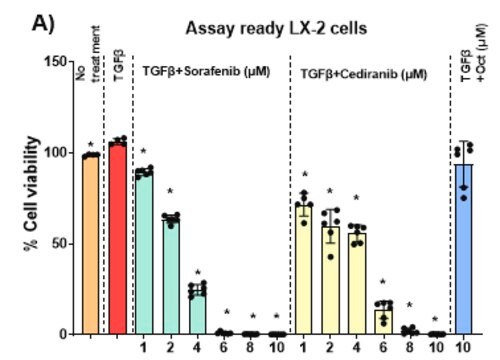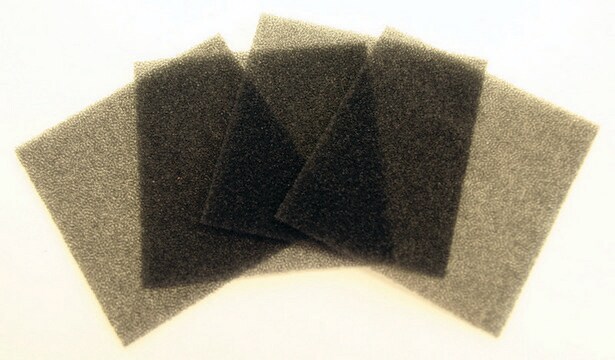SCC613
LX-2 Cas9 Human Hepatic Stellate Cell Line
Sinónimos:
HSC Cas9;Perisinusoidal cells Cas9;Ito cells Cas9;Hepatic pericytes Cas9;Hepatic stellate cells Cas9
About This Item
Productos recomendados
biological source
human
Quality Level
packaging
vial of ≥1X10⁶ cells/vial vial
manufacturer/tradename
Millipore
growth mode
N/A
technique(s)
cell culture | mammalian: suitable
shipped in
liquid nitrogen
storage temp.
−196°C
Application
- Each vial contains >1X106 viable cells.
- Cells are tested negative for infectious diseases by a Human Essential CLEAR Panel by Charles River Animal Diagnostic Services.
- Cells are verified to be of human origin and negative for interspecies contamination from mouse, rat, Chinese hamster, Golden Syrian hamster, and nonhuman primate (NHP) as assessed by a Contamination Clear panel by Charles River Animal Diagnostic Services
- Cells are negative for mycoplasma contamination.
The immortalized LX-2 line was established by Xu et al to overcome issues of culture variability and to provide a stable and unlimited source of human hepatic stellate cells that are homogeneous. These cell lines have been extensively characterized and retain key features of cytokine signaling, neuronal gene expression, retinoid metabolism, and fibrogenesis, making them highly suitable for culture based studies of human hepatic fibrosis.
Source
LX-2 Cas9 human hepatic stellate cells were derived from LX-2 cells transformed with a Cas9 cassette.
LX-2 was generated by immortalization of primary human hepatic stellate cells with the SV40 large T antigen followed by selective culture of early passage cells in low serum media conditions.
References
1.Gut 2005, 54(1): 142-151.
2.PloS One 2013, 8(10): e75692.
Features and Benefits
Storage and Stability
Other Notes
Disclaimer
Related product
Storage Class
10 - Combustible liquids
wgk_germany
WGK 2
flash_point_f
Not applicable
flash_point_c
Not applicable
Certificados de análisis (COA)
Busque Certificados de análisis (COA) introduciendo el número de lote del producto. Los números de lote se encuentran en la etiqueta del producto después de las palabras «Lot» o «Batch»
¿Ya tiene este producto?
Encuentre la documentación para los productos que ha comprado recientemente en la Biblioteca de documentos.
Nuestro equipo de científicos tiene experiencia en todas las áreas de investigación: Ciencias de la vida, Ciencia de los materiales, Síntesis química, Cromatografía, Analítica y muchas otras.
Póngase en contacto con el Servicio técnico





